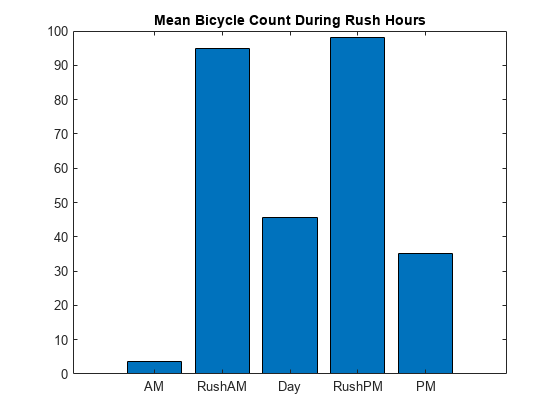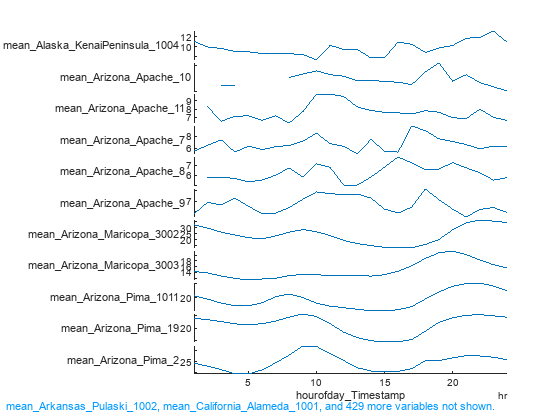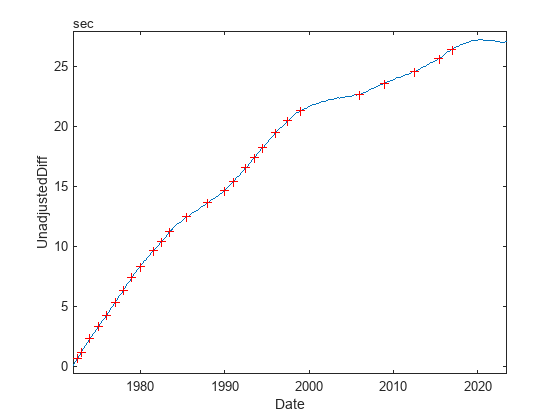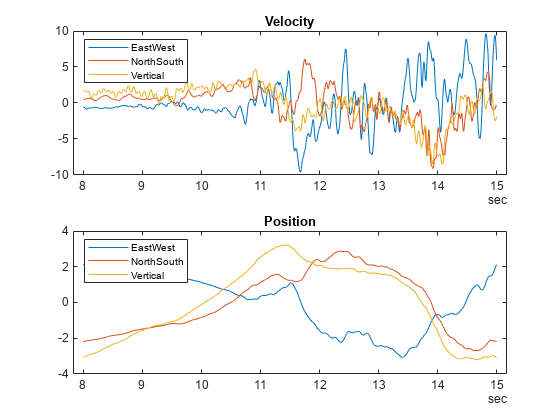Timetables
Le type de table timetable associe une heure à chaque ligne. Tout comme table, le type de données timetable peut stocker des variables orientées colonnes comportant le même nombre de lignes. Toutes les fonctions de table peuvent être utilisées avec des timetables. Ces dernières proposent en outre des fonctions temporelles permettant d’aligner et de combiner des timetables et d’effectuer des calculs avec une ou plusieurs d’entre elles. Pour plus d’informations, consultez Create Timetables ou regardez la vidéo Managing Time-Stamped Tabular Data with Timetables (Gérer des données tabulaires horodatées avec les timetables).
Pour trouver et labelliser les événements dans une timetable, attachez-lui une table d’événements (eventtable). Pour plus d’informations, consultez eventtable.
Fonctions
Applications
| Data Cleaner | Preprocess and organize column-oriented data (depuis R2022a) |
Tâches du Live Editor
| Retime Timetable | Resample or aggregate timetable data in the Live Editor (depuis R2020a) |
| Synchronize Timetables | Retime and combine timetables to new time vector in the Live Editor (depuis R2020a) |
| Compute by Group | Summarize, transform, or filter by group in the Live Editor (depuis R2021b) |
| Pivot Table | Summarize tabular data in pivoted table in the Live Editor (depuis R2023b) |
Rubriques
- Create Timetables
Create timetables from input row times and data arrays, by converting arrays, tables, or
timeseriesarrays, or by importing files with tabular data. - Clean Timetable with Missing, Duplicate, or Nonuniform Times
Clean timetables that have missing, duplicate, or irregular times, and produce regular timetables.
- Direct Calculations on Tables and Timetables
You can perform calculations directly on tables and timetables without indexing to extract their data. All the variables in your tables and timetables must have data types that support calculations.
- Resample and Aggregate Data in Timetable
Resample or aggregate data in a timetable to a new vector of row times.
- Access Data in Tables
Indexing into tables with parentheses, dot notation, and curly braces accesses table data in different ways. You can use indexing to create a table that is a subset of a larger table or to create an array from data in a table.





